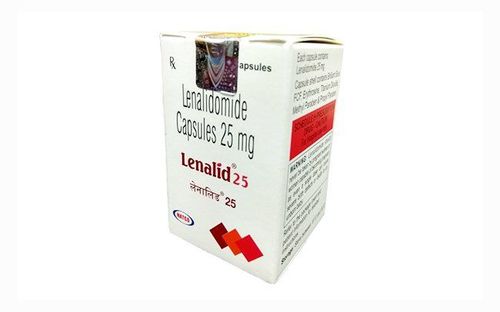This is an automatically translated article.
Sandostatin (Octreotide) is an injectable drug that includes many different strengths, belongs to the group of anti-cancer drugs that affect the immune system. So what are the uses of Sandostatin and what side effects do users have?
1. What is Sandostatin?
Sandostatin drug belongs to the group of anti-cancer drugs and acts on the immune system. The drug is in the form of a solution for injection, packed in 5 ampoules of 1ml/box.
The main ingredient of Sandostatin is Octreotide 0.1mg/1ml, with circulation registration number VN-17538-13. Sandostatin is used to control symptoms such as diarrhea or flushing in patients with tumors such as carcinoids, pancreatic islet cells, gastric disease, or tumors that secrete active peptides in the intestines (VIPomas). In some cases, treatment is also indicated when the body produces too much growth hormone and the hands, feet, face or head grow too large.
2. What are the effects of Sandostatin?
Sandostatin® contains the active ingredient Octreotide. You can use it to treat severe diarrhea and sudden flushing of the face and neck caused by certain types of tumors (eg carcinoid tumors, activated peptide tumors of the small intestine) that are commonly found in the intestines, pancreas. Symptoms occur when these tumors produce too much of certain natural substances (hormones). The drug works by minimizing the loss of water and minerals by the body.
Octreotide is also used to treat acromegaly, which occurs when the body makes too much growth hormone. Treating acromegaly helps reduce the risk of serious problems like diabetes and heart disease. Sandostatin is given by injection under the skin. Injection sites are often rotated. Sandostatin can also be given intravenously, under a doctor's supervision. 1 injection within 4 weeks. The right place to inject is the hip, as arm injections are often painful.
If short-acting Sandostatin is to be replaced by longer-acting Sandostatin LAR, short-acting Sandostatin should be continued for at least 2 weeks to maintain the therapeutic dose in patients with carcinoid tumors or VIPomas.
The short-acting Sandostatin may also be used to control breakthrough symptoms in carcinoids.
The amount of Sandostatin you will receive depends on many factors, such as your height, weight, general health or other health problems, the type of cancer and the condition being treated. treatment. The doctor will determine the patient's dose and injection schedule.
3. Pharmacokinetic properties
Absorption:
After injection, Sandostatin is rapidly and completely absorbed. Peak plasma concentrations are reached within 30 minutes. Distribution:
The volume of distribution is 0.27 L/kg and total body clearance 160 mL/min. The amount bound to plasma proteins is 65%. The amount of Sandostatin bound to blood cells is negligible. Elimination:
The half-life after dosing is 100 minutes. Following IV administration, elimination is biphasic, with half-lives of 10 and 90 minutes. Most of the peptide is eliminated in the faeces, while about 32% is excreted unchanged in the urine. Special Patients:
Impaired renal function has no effect on total exposure (AUC) to octreotide administered as s.c. injection. Elimination capacity may be reduced in patients with cirrhosis, but not in patients with fatty liver.
4. Usage of the drug Sandostatin
4.1. How to use Sandostatin Subcutaneously:
Patients who self-inject the drug by subcutaneous injection must receive exact instructions from their doctor or treating nurse. To reduce pain and discomfort at the injection site, it is recommended that the solution for injection return to room temperature before injection. Do not inject into the same place when taking the next dose. The syringe should only be opened immediately after use, the excess medicine should be discarded and not used again. To prevent infection it is recommended that no more than ten doses of medication should be taken from the multidose vial. Intravenous infusion:
Drugs used outside the gastrointestinal tract must be carefully examined with the naked eye for discoloration, or cloudiness before use. Sandostatin (octreotide acetate) is physically and chemically stable for 24 hours after being reconstituted with sterile physiological saline or 5% sterile dextrose (glucose) solution. However, because Sandostatin may affect glucose homeostasis, normal saline is preferable to dextrose solution. The time between the preparation of the infusion solution with the diluent, which must be stored in the refrigerator until the end of the infusion, should not exceed 24 hours. In cases where Sandostatin is used for intravenous infusion, a 0.5mg ampoule will usually dissolve in 60mL of physiological saline. This therapeutic treatment should be repeated as often as necessary until the indicated duration of treatment has been reached. 4.2. Dosage of Sandostatin Drugs Acromegaly:
Initial dose 0.05-0.1 mg subcutaneously every 8 or 12 hours. Dose adjustment should be based on monthly assessment of GH and IGF-1 levels (target: GH < 2.5 ng/mL, IGF-1 within normal range) and clinical symptoms, and drug tolerance. For most patients, the best daily dose is 0.3mg. Do not exceed a maximum dose of 1.5 mg/day. For patients on stable doses of Sandostatin, assessment of GH should be performed every 6 months. If GH levels do not decrease and clinical symptoms do not improve after 3 months of treatment with Sandostatin, treatment should be discontinued. Tumors of the endocrine system of the stomach, intestines, pancreas:
Initial dose 0.05mg once or twice daily subcutaneously. Depending on clinical response, concentrations of hormones secreted by the tumor (in the case of carcinoid tumors, based on urinary excretion of 5-hydroxyindoleacetic acid), and on tolerability of the drug, the dose can be gradually increased up to 0.1-0.2 mg; 3 times/day. In exceptional cases, the dose may be increased. The maintenance dose should be adjusted on a case-by-case basis. In the case of carcinoid tumors, if there is no beneficial response within one week of treatment with Sandostatin at the maximum tolerated dose, treatment should be discontinued. Complications after pancreatic surgery:
0.1mg x 3 times/day subcutaneously for 7 consecutive days, starting on the day of surgery at least 1 hour before surgery. Gastroesophageal varices bleeding:
25 μg/hour by continuous intravenous infusion for 5 days. Sandostatin can be diluted with physiological saline. In cirrhotic patients with bleeding from esophageal varices, Sandostatin was well tolerated with continuous intravenous infusion doses up to 50 μg/hour for 5 days. For special patients:
Liver failure : For patients with cirrhosis, the half-life of the drug may be prolonged, maintenance dose adjustment is necessary. Renal Impairment: Impaired renal function did not affect the systemic exposure (AUC) of octreotide administered subcutaneously, so no dose adjustment of Sandostatin is required. Group of pediatric patients:
Experience in Sandostatin treatment in children is very limited. Geriatric population:
There is no evidence of reduced tolerability or the need for dose modification in the elderly treated with Sandostatin.
5. Notes when using Sandostatin
Contraindications:
Hypersensitivity to octreotide or to any of the excipients General Precautions:
Due to GH-secreting pituitary tumors, serious complications may develop. Patients should be carefully monitored. If there are signs of an increase in tumor size, another treatment modality will be selected. When treatment reduces growth hormone (GH) levels, normalizing insulin-like growth factor 1 (IGF-1) levels in female patients with acromegaly, fertility can be restored. Monitor patients with thyroid function during prolonged treatment with octreotide. There have been reports of cases of bradycardia, which would require dose adjustment of drugs such as beta-blockers, calcium channel blockers or drugs that control fluid and electrolyte balance. Gallstone formation is reported in 15-30% of patients receiving Sandostatin. Therefore, ultrasound examination of the gallbladder before and during Sandostatin therapy every 6-12 months is recommended. In the treatment of tumors of the gastrointestinal-pancreatic endocrine system, there have been rare cases where symptoms could not be controlled with Sandostatin, with rapid recurrence of severe symptoms. Due to the inhibitory effect of the drug on growth hormone, glucagon and insulin; Sandostatin may affect glucose regulation. Postprandial glucose tolerance may be impaired and, in some cases, persistent hyperglycemia due to prolonged dosing. Hypoglycemia has also been reported. Because after bleeding episodes from esophageal varices there is an increased risk of insulin-dependent diabetes or changes in insulin requirements in people with pre-existing diabetes, close monitoring Blood glucose concentration is required. In some patients, Octreotide may alter the absorption of dietary fats. Decreased vitamin B12 levels and abnormal Schilling's test have been observed in some patients treated with Octreotide. Vitamin B12 levels should be monitored during treatment with Sandostatin in patients with a history of vitamin B12 deficiency. There are no data on the effects on the ability to drive and use machines with Sandostatin.
6. Sandostatin drug side effects
Sandostatin has some side effects to watch out for:
Maybe more than 30% will happen to patients taking Sandostatin: Gallstones are often seen with long-term use; Nausea; Pain at the injection site; Less common side effects: Abdominal pain; Bloating due to bloating; Constipation; Vomiting; Diarrhea (may be due to illness, not medication); Upper respiratory tract infection; Tired; Flu-like syndrome; Dizzy; Headache The above are the uses of Sandostatin drug, dosage and note when using. To ensure the safety of your health and maximize the effectiveness of treatment, you need to take the medicine exactly as directed by your doctor.
Please dial HOTLINE for more information or register for an appointment HERE. Download MyVinmec app to make appointments faster and to manage your bookings easily.
Reference source: pharmog.com, chemocare.com












